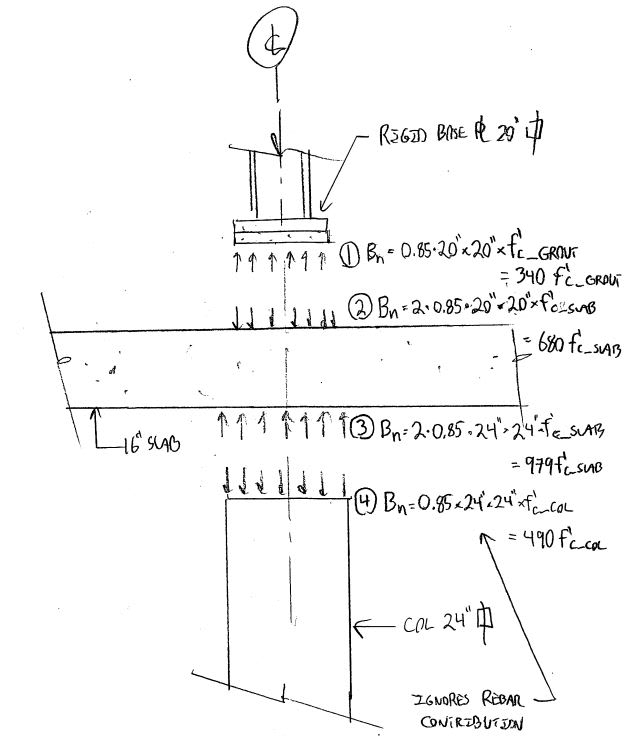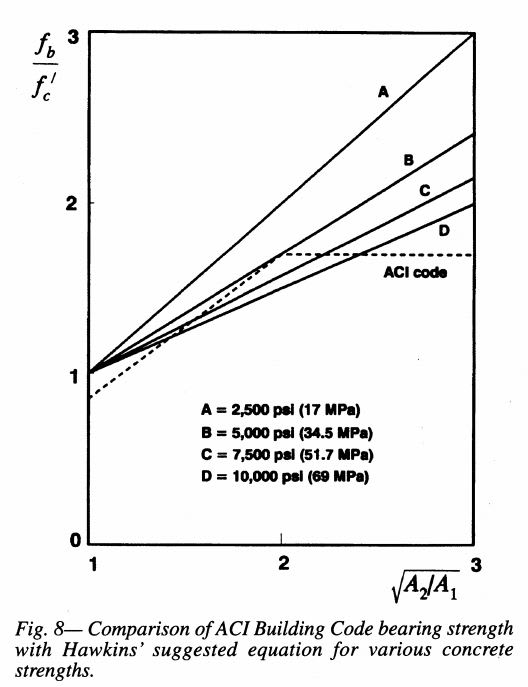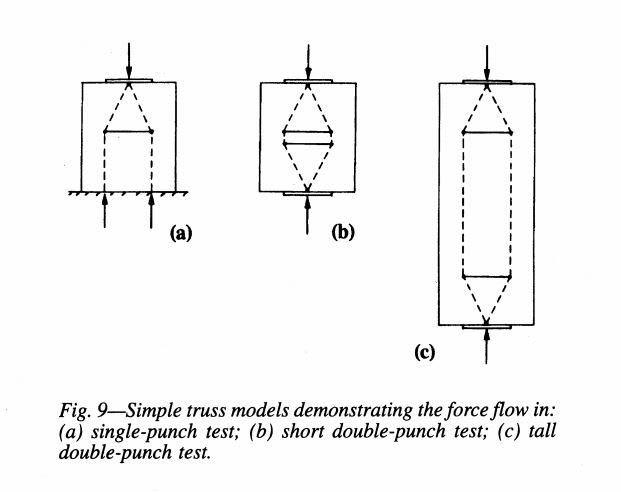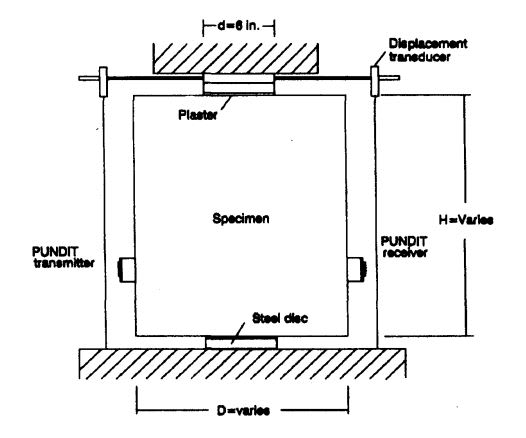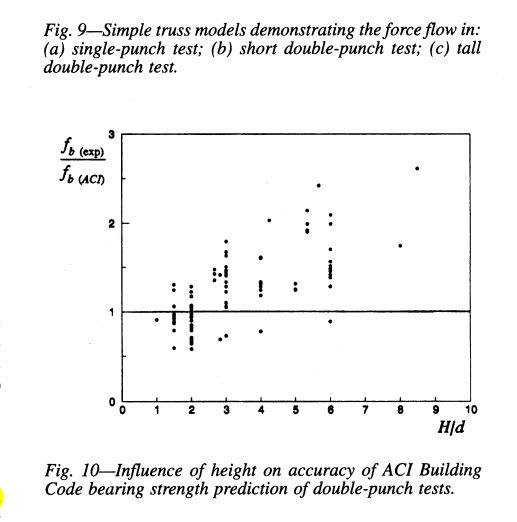spaseur
Structural
- Oct 13, 2008
- 26
I have a steel column that will be supported on a concrete slab supported on a 24"x24" concrete column. The dropped panel at the top of the concrete column is 16" deep. There has been much discussion in our office of what the bearing capacity of the concrete. The discussion basically comes down to the what is A2? Is A2 determined by the plan size of the concrete slab? In which case the bearing capacity will increase by a factor of 2. If A2 is determined by the size of the column below - 24x24, the capacity will increase by factor of 1.2 (20x20 base plate). What are your thoughts/opinions? See link below for picture.

